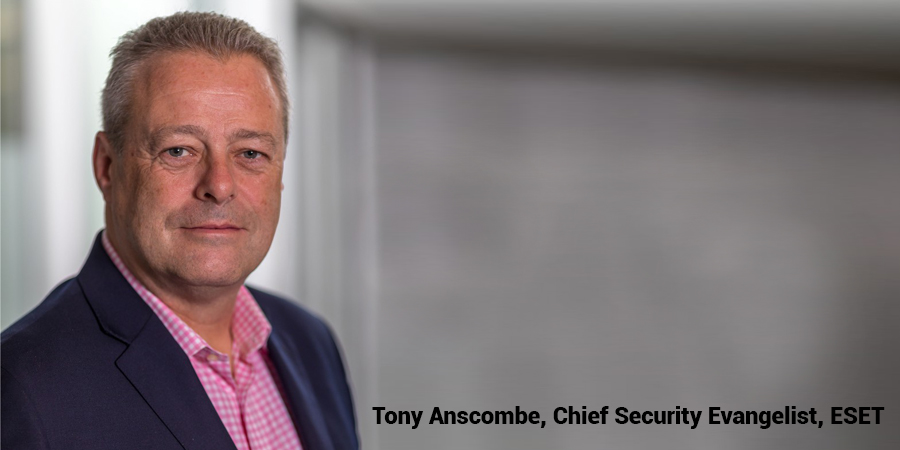In an exclusive with Telecom Review North America, Tony Anscombe, chief security evangelist for ESET shed light about the company’s products and how they keep up with the rising cybersecurity demands at present.
With over 20 years of security industry experience, Tony Anscombe is an established author, blogger and speaker on the current threat landscape, security technologies and products, data protection, privacy and trust and internet safety.
Can you tell us briefly about ESET?
ESET is a leading cybersecurity company providing world-class security solutions for 30 years, helping organizations and governments stay protected from the world’s most advanced cyber threats. ESET’s solutions are underpinned and strengthened by real-time cybersecurity intelligence that protects against previously unseen threats and sophisticated APT group activity.
How do ESET's high-performing and easy-to-use products give consumers and businesses peace of mind and confidence in dealing with their security matters?
ESET is a cybersecurity research-orientated company at its core, and in today’s environment of complex and stealthy cyberattacks, intelligence and knowledge are critical. Leveraging technology, such as machine learning and other innovative methods to automate detection, blocking and response is essential. Complimenting this with human intelligence delivered by dedicated researchers who provide insight into existing, emerging and potential threats enables ESET’s products to deliver highly accurate cybersecurity protection. Another important factor with all cybersecurity products is performance. The development teams take great pride in delivering not only accurate products but ones that perform with a minimal footprint and impact on the endpoint. Both of these attributes are tested and verified by independent labs, which should give businesses the confidence and peace of mind needed.
Having years of IT security experience, how did the cybersecurity scene change through time in North America and globally? What are companies like ESET doing to keep up with the rising cybersecurity demands?
Leaning on my own experience of 25+ years in the IT security industry, I have witnessed many changes in the threat landscape. Cyberattacks have changed from disruption or a badge of honor to a highly motivated cybercrime environment that can bring significant revenue to those conducting the attacks. This has required all businesses and consumers to understand the threat to data, be it personal or business, and to take protective measure to secure their assets. What were once the tools of financial institutions and governments are now a regular part of everyday life – encryption and multi-factor authentication are good examples of this. The increased threat has required companies like ESET to adapt dynamic and innovative techniques to provide the protection needed, for example the use of machine learning has been implemented in the endpoint solution for 15+ years. The need to continually innovate new methods to detect malicious behavior never stops and ESET’s recently announced partnership with Intel and utilizing a hardware-based option to improve the detection of threats such as ransomware demonstrates the commitment to adapt to an ever-changing environment.
Does ESET have any specific solution intended for telecom?
ESET’s NETPROTECT provides carrier-level protection for endpoint devices utilizing the carrier networks. Carriers can select from a menu of services to offer customers, from anti-malware and anti-phishing and whitelisting, through to web filtering all being delivered by utilizing DNS filtering. Coupled with management that allows customization based on customer requirements, it’s a perfect solution for carriers and ISPs to offer as an added value to customers.
As an advocate, which among the wide range of internet security topics should be most discussed and addressed head-on in the current digital era?
Some threats don’t seem to go away; for example, if you look at the recent Cybersecurity Awareness Month campaign, it promotes the need for phishing caution and enhanced authentication with multi-factor authentication. Look back 10 years and the campaign was about phishing and the need for better password security. While authentication has evolved and we are now seeing vendors move to password-less environments, the issue of phishing remains constant, to the degree that the Cybersecurity Infrastructure Security Agency suggests that 90% of all cyber-incidents start with a phishing or spear-phishing attack. The other area that should be addressed is cryptocurrency. Remove the opportunity to make money and the cybercriminals will take leave and move to other forms of crime to make money. Regulation of the cryptocurrency environment to bring it in line with other financial regulations seems like a quick win, but is one that seems not to be addressed.










